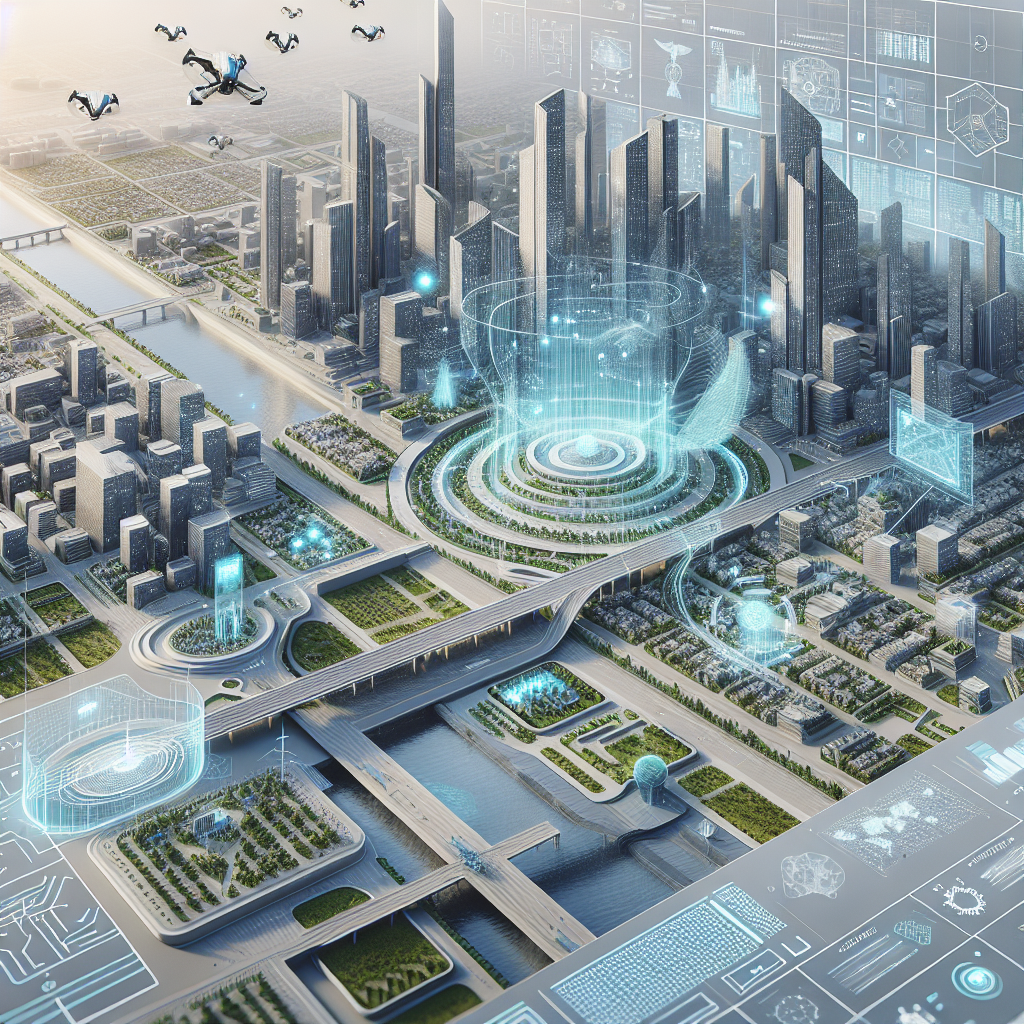The Intersection of AI and Parametric Urbanism
In recent years, the field of urban planning has been revolutionized by the integration of artificial intelligence (AI) and parametric design principles. This intersection has led to the emergence of a new approach to urbanism, known as parametric urbanism, which leverages AI algorithms to optimize the design and planning of cities in ways that were previously unimaginable.
Parametric urbanism is a design methodology that uses algorithms to generate and manipulate complex urban forms and patterns. By inputting a set of parameters and constraints into a computer program, designers can explore a vast array of design possibilities and quickly evaluate the performance of different design options. This approach allows for a more iterative and data-driven design process, leading to more efficient and sustainable urban environments.
The integration of AI into parametric urbanism has further enhanced the capabilities of this design methodology. AI algorithms can analyze large amounts of data, predict future trends, and optimize design solutions in ways that human designers alone cannot. By harnessing the power of AI, urban planners can create more resilient, adaptable, and responsive cities that can better meet the needs of their residents.
One of the key benefits of using AI in parametric urbanism is the ability to optimize urban systems in real-time. For example, AI algorithms can analyze traffic patterns, energy consumption, and other data to optimize the layout of a city in ways that minimize congestion, reduce energy usage, and improve overall quality of life. This dynamic approach to urban planning allows for cities to evolve and adapt to changing conditions, ensuring that they remain efficient and sustainable in the long term.
Another advantage of using AI in parametric urbanism is the ability to simulate and analyze the impact of design decisions before they are implemented. By running simulations and virtual reality models, designers can test different scenarios and evaluate the performance of their designs in a virtual environment. This allows for more informed decision-making and can help to avoid costly mistakes in the construction and development of urban projects.
Furthermore, AI can help to democratize the design process by involving a wider range of stakeholders in the decision-making process. By using AI algorithms to generate design options and evaluate their performance, designers can solicit feedback from residents, policymakers, and other stakeholders to ensure that their designs meet the needs and preferences of the community. This participatory approach to urban planning can help to build consensus, foster transparency, and create more inclusive and equitable cities.
Despite the numerous benefits of integrating AI into parametric urbanism, there are also challenges and limitations to consider. One of the main concerns is the potential for bias in AI algorithms, which can perpetuate inequalities and exacerbate social injustices in urban environments. Designers must be mindful of the data inputs and assumptions that underlie AI algorithms to ensure that they do not reinforce existing disparities or create new forms of exclusion.
Another challenge is the need for interdisciplinary collaboration and expertise in order to effectively integrate AI into parametric urbanism. Designers, engineers, data scientists, and policymakers must work together to develop and implement AI solutions that are tailored to the specific needs and context of a city. This requires a shift in mindset and a willingness to embrace new technologies and methodologies in urban planning practice.
In conclusion, the intersection of AI and parametric urbanism represents a promising new direction for the field of urban planning. By leveraging the power of AI algorithms to optimize design solutions and simulate urban systems, designers can create more sustainable, resilient, and inclusive cities that can better meet the needs of their residents. While there are challenges and limitations to consider, the potential benefits of using AI in parametric urbanism are significant and far-reaching. As cities continue to grow and evolve in the 21st century, the integration of AI into urban planning practice will play an increasingly important role in shaping the future of our built environment.
FAQs
Q: How can AI be used in parametric urbanism?
A: AI algorithms can be used to analyze data, predict future trends, optimize design solutions, simulate urban systems, and involve stakeholders in the decision-making process in parametric urbanism.
Q: What are the benefits of integrating AI into urban planning?
A: The benefits of integrating AI into urban planning include optimizing urban systems in real-time, simulating and analyzing design decisions, democratizing the design process, and fostering inclusivity and equity in cities.
Q: What are the challenges of using AI in parametric urbanism?
A: The challenges of using AI in parametric urbanism include the potential for bias in AI algorithms, the need for interdisciplinary collaboration and expertise, and the ethical implications of using AI in urban planning.
Q: How can designers ensure that AI algorithms do not perpetuate inequalities in urban environments?
A: Designers can ensure that AI algorithms do not perpetuate inequalities by being mindful of the data inputs and assumptions that underlie AI algorithms, involving a wider range of stakeholders in the decision-making process, and promoting transparency and accountability in the use of AI in urban planning.

